Croatian Food Dishes: Basic Overview
Common Ingredients
Common Cooking Methods
Courses
Meals
Key Taste
Eating Etiquette
Meal Presentation
Culinary Festivals
Influence and Fusion
Popular Types of Croatian Dishes
-
Charcuterie and cheese boards
In Croatian cuisine, charcuterie boards showcase various cured meats with a rich array of flavors.
From the dry-cured, wind-pressed krčki pršut to the spicy baranjski kulen, these meat delicacies are often paired with cheese for a perfect blend of tastes.
-
Stews
Croatian stews are filled with deep, comforting flavors. Ingredients like beef, lamb, and an assortment of vegetables are slow-cooked to perfection.
Dishes like pašticada, with its sweet-sour sauce, and the bean and sauerkraut-packed Istarska jota, exemplify the rich, warming nature of these stews, often enjoyed with a side of bread or potatoes.
-
Grilled and barbecued dishes
Grilling and barbecuing are beloved cooking methods in Croatia, especially along the coast and the countryside.
Fish and meats are seasoned simply with olive oil, garlic, and herbs, then perfectly grilled.
-
Bread and doughs
Bread and various dough-based foods hold a special place in Croatian culinary traditions.
From the simple yet delicious šunka u kruhu, to the more complex štrukli, dough filled with cheese and baked or boiled, these dishes are versatile and widely loved.
-
Cakes and pastries
Croatian cakes and pastries range from sweet to savory, incorporating local ingredients like fruits, nuts, and cheeses.
The layered medjimurje gibanica, with its sweet fillings, and the light, almond-filled rafioli cookies are just a couple of examples.
-
Noodle soups
In Croatian cuisine, dry noodle dishes aren’t as prominent as in some other cultures, but there’s still a place for them.
These dishes usually involve noodles that are either baked or served with minimal to no broth, allowing the flavors of the other ingredients to stand out more.
Croatian dishes are diverse, and known for many regions, each offering a distinct culinary tradition. Its roots trace back to ancient times, with notable differences between mainland and coastal cuisines.
The mainland is influenced by Slavic, Hungarian culinary delights, and Turkish delights, featuring lard, black pepper, paprika, and garlic.
Coastal cuisine reflects Greek delicacies, Roman flavors, and Mediterranean specialties, particularly Italian delights. It includes the liberal use of olive oil, as well as herbs such as rosemary, sage, bay leaf, oregano, and marjoram.
Croatian cooking combines peasant traditions with imaginative variations of basic ingredients and bourgeois cuisine with more complex procedures. Charcuterie is a staple across all regions.
Despite regional variations, most dishes are found nationwide, with local adaptations. Croatian cuisine includes meat-based dishes, seafood, stewed vegetables with meat or sausages, and a variety of soups.
Pasta is popular, especially in Dalmatia, and soup is an integral part of meals, with a wine-making tradition in three main regions: Continental, Coastal (including islands), and Slavonia.
When you’re through with Croatian dishes, it’s wise to keep looking into some recommended combos of food and beverages to elevate your experience.
41 Popular Croatian Dishes
Here are the 41 most famous dishes from Croatia, arranged by their popularity. Jump into these dishes with the filter system, allowing you to see these specialties alphabetically, cooking methods, key ingredients, tastes, dish types, and even their global popularity.
Also, you need to take a look at these most popular fares along with traditional, national, and street food options in Croatia:
Krčki Pršut
- Traditional
Krčki pršut is a variety of Croatian prosciutto known for its unique curing process. This delicacy can be found with or without skin, but its curing technique relies solely on dry or wet curing.
Rather than smoking the prosciutto until dry, the locals make use of the climate conditions of the Adriatic to press the meat.
The “salted” Bora wind, characteristic of certain seasons, along with the intense sunlight, naturally dries the meat, enhancing its subtle flavors without the need for artificial smoking.
Istrian Pršut
- Traditional
Istrian pršut is a skinless cured ham that has been a part of Croatian culinary heritage since ancient times. This delicacy is crafted from the thighs of pigs raised under stringent nutritional guidelines.
The process begins with the meticulous selection of meat, followed by salting and the removal of fat and skin, before proceeding to the crucial stage of natural drying.
During this phase, a premium mold is allowed to form on the meat’s surface, significantly enhancing its flavor. The aging process for Istrian pršut can extend from 12 to 18 months, often served as cold cuts or appetizers.
Pašticada
- Traditional
Pašticada is a celebrated Dalmatian beef stew in Croatia, distinguished by its unique sweet-sour sauce. This dish is made with a whole eye of round, often accompanied by njoke (gnocchi), the classic, soft European dumplings.
For special occasions, such as weddings, pašticada is typically served with a variety of handmade pastas. To elevate the dining experience, I suggest pairing it with Croatian wine.
The origins of Pašticada are somewhat mysterious, though it is believed to have first emerged in the 15th century in what was then the city of Ragusa, now known as Dubrovnik, in southern Croatia.
Janjetina Ispod Peke
- Traditional
Janjetina ispod peke is a traditional Croatian dish coming from Dalmatia and Istria of Croatia. It involves a simple yet flavorful preparation of lamb and vegetables, seasoned with olive oil and white wine to enhance the meat’s tenderness.
The cooking is done in a traditional Croatian pot known as a peka in Dalmatia or čripnja in Istria, where it is slow-cooked for several hours.
In Croatia, the stew is typically served with kruh ispod peke, a special type of bread, alongside green vegetables, and complemented with a refreshing beer.
Zagrebački Odrezak
- Fusion
- Street Food
- Traditional
Zagrebački odrezak is a dish hailing from Zagreb, the capital of Croatia, that may resemble deep-fried ham. This culinary specialty makes use of premium veal.
The preparation involves thinly slicing the veal, which is then stuffed with ham and cheese, coated in eggs and flour, and finally deep-fried. The technique ensures the dish is fried quickly in hot oil.
Over time, adaptations have been made to bring this dish closer to everyday life, substituting veal with more affordable meats like chicken or pork. Typically, people serve the dish with sour accompaniments like lemon.
Istarska Jota
- Traditional
Istarska jota is a stew well-known throughout Istria and various regions in northwestern Croatia. The stew is a combination of sauerkraut and beans with the addition of bacon, spare ribs, and potatoes.
The stew is also a popular pick in Italy and Slovenia, going by the same moniker.
Baranjski Kulen
- Street Food
- Traditional
Baranjski kulen is a cured meat sausage from Baranja, Croatia, possessing an outer layer of brown color. This region of Croatia, famed for its agricultural excellence, is the source of Croatia’s finest quality pork.
Influenced by the spicy notes of Hungarian cuisine, baranjski kulen offers a unique spiciness. It requires a maturation process of at least 9 months to develop the flavor, often smoked or dried, and sometimes even coated in ashes for a drier variant.
The painstaking production ensures a unique blend of exotic spicy, and smoky tastes. To best enjoy it, pair the sausage with bread, cheese, and a good wine.
Odojak Na Ražnju
- Street Food
- Traditional
Odojak na ražnju is a Croatian roasted suckling pig, also known as a young pig or piglet possessing a subtle milky hint. By roasting the young pig on a spit, the meat is cooked well-rounded.
A well-prepared odojak na ražnju promises exceptionally crisp skin coupled with the delicate flavors of pork meat. The juicy and mellow taste, largely derived from the high-quality pork, makes it an ideal match for roasted potatoes and crispy bread.
Given the considerable time required for cooking, ranging from approximately 3.5 to 5.5 hours, depending on the size of the pig, odojak na ražnju is often reserved for special occasions or serving esteemed guests.
Krvavica
- Street Food
- Traditional
Krvavica is a variety of blood sausage from Croatia celebrated in the Zagorje and Slavonija-Baranja regions. Unlike other blood sausages that might rely on oats or oatmeal as fillers, Croatian krvavica incorporates pork skin, offal, and blood.
The blood sausage is a favored dish in Croatia, particularly during the winter months. Accompanied by boiled potatoes, stir-fried onions, or a fresh cabbage salad, Krvavica offers a comforting and hearty meal that reflects the culinary heritage and preferences of the Croatian people.
Brodet
- Traditional
Brodet, also known as brudet, is a seafood stew in Croatia having at least three different types of seafood. Popular versions often feature a variety of shellfish, including clams and oysters, as well as shrimp and crab.
Interestingly, the stew is simmered for a long time and requires no stirring. The distinctiveness of this Croatian culinary creation lies in the fish, seafood, spices, vegetables, and either wine or vinegar simmered in a single pot.
While the specific approach to making brodet may vary from one household to another, a common serving suggestion is to accompany it with crispy toasted bread or corn porridge (polenta).
Ričet
- Traditional
Ričet is a traditional porridge in Croatia, known for its hearty blend of pot barley, beans, vegetables, and cured pork. The thick dish is served either as a soup or a porridge.
The name “ričet” is derived from Styrian German, hinting at meanings related to “slippery” and “slide,” reflecting its consistency. Historically, this greasy concoction was often served to prisoners.
Pijani Šaran
- Traditional
Pijani saran, known as drunken carp in English, is a dish made with carp by steaming. The dish earns its name from the wine that plays a crucial role in its recipe, enhancing the flavor profile of this Zagorje-inspired cuisine.
The preparation involves salting the fish and incorporating an array of potent condiments, herbs, and spices.
In Croatia, it is traditionally enjoyed with baked potatoes, providing a starchy and mild foundation, along with lemon slices and parsley for added zest and flavor.
Gradele
- Street Food
- Traditional
Gradele is a way of grilling fish in Croatia’s coastal areas. This cooking technique is versatile, allowing for the grilling of different fish types simultaneously.
With minimal preparation, the dish involves leaving the head on and cleaning the intestines. A unique aspect of the grilling process involves using a rosemary branch dipped in olive oil to brush the fish, infusing it with aromatic flavors.
Perfect for the summer months when seafood is plentiful, and the weather is warm, gradele is often enjoyed beachside, accompanied by boiled potatoes, parsley, garlic, swiss chard, and fine wine.
Slane Srdele
- Traditional
Slane srdele is a seasonal saltwater fish delicacy in Dalmatia, Croatia, often available from May to August. This dish is crafted through a straightforward method, utilizing only coarse sea salt to cure fresh fish, specifically sardines.
The sardines are layered with salt in a barrel or old tin, a process that extends their shelf life. Often, slane srdele takes a minimum of three months before it is ready for serving.
It is worth noting that the fish becomes exceptionally salty, making it advisable to pair it with other foods to balance the intense saltiness.
Šaran U Rašljama
- Street Food
- Traditional
Šaran u rašljama is a grilled fish specialty that means “Carp In Forks”. This Baranja’s specialty offers a tempting smoky wood scent and slightly hot taste from ground red paprika.
When eating the fish, sellers will usually provide you with some fresh and pungent veggies such as spring onions or some salads to enhance the dish.
Gregada
- Traditional
Gregada is one of the oldest ways to cook fish in Dalmatia of Croatia, a specialty in Hvar island, a part of Split-Dalmatia County.
The original version required only saltwater fish, while the Croatian variations utilize several veggies and herbs, especially potatoes, celery, parsley, and some wine, to decrease the fishy notes.
Among all of the fish, Croatians love using salted anchovies, capers, grouper, monkfish, or pandora fish. When cooking this Gregada, they will not stir the ingredients to avoid breaking the fish meat.
Dagnje Na Buzaru
- Traditional
Dagnje na buzaru, also known as školjke na buzaru in certain Croatian regions, is a seafood specialty that revolves around mussels. In Croatian, “buzara” translates to “stew” and “dagnje” to “mussels”.
The dish makes use of the whole mussel, cooked with a medley of ingredients in a single pot. To complement its flavors and textures, it’s often served with bread and breadcrumbs.
Perkelt Od Soma
- Traditional
Perkelt od soma, inspired by the renowned Hungarian pörkölt stew, is a fare in the Slavonija and Baranja regions of Croatia. This thick stew is made with the white, succulent flesh of catfish.
Croatians typically enjoy it with noodles, crispy bacon bits, and a sprinkle of cheese, offering a satisfying treat. Perkelt od soma allows for various serving options with a starchy base to balance the dish’s flavors.
For those exploring local flavors, store sellers are often happy to provide recommendations and can cater to preferences for milder spice levels upon request.
Šunka U Kruhu
- Traditional
Šunka u kruhu is a favorite Easter food in Croatia, featuring a ham-covered bread dish. Accompanied by fresh scallions and horseradish sauce, it brings out a refreshing taste.
Known for their love of bread, Croatians enjoy this dish at any time of the day. It makes for a perfect Croatian-style breakfast on Easter morning or a hearty dinner treat.
Palačinke
- Street Food
- Traditional
Palačinke is a delicate, crêpe-like pancake in Croatia with roots in Greco-Roman cuisine. Originating from the Latin word “placenta,” which means thin or layered flatbread, the term “palatschinken” has been adopted into various languages.
The batter for palačinke consists of eggs, flour, milk, and salt, allowing for both sweet and savory adaptations.
Bučnica
- Street Food
- Traditional
Bučnica is a Croatian strudel with young pumpkin mash as its filling. This dish is ideally prepared in the summer, taking advantage of the season’s abundance of fresh, young pumpkins.
A properly baked bučnica boasts a crispy crust, with the richness of the pumpkin complemented by the addition of fresh cheese, butter, eggs, and sour cream.
For an added touch of refreshing sourness, a dollop of sour cream on top is recommended.
Pinca
- Traditional
Pinca is a traditional Croatian bread with its roots in the Venetian Republic. Today, it is a festive favorite, particularly during Easter, when Croatians customarily take it to church on Holy Saturday in the hope of securing blessings.
Fortunately, this bread is now widely accessible throughout the year in supermarkets, patisseries, and bakeries across Croatia. A pinca loaf is distinguished by its amber-brown crust adorned with a cross symbol.
Popara
- Traditional
Popara is a Croatian version of a bread dish coming from the Balkans. Renowned for its quality, the finest popara can be found in Vukovar-Srijem County, Croatia.
Originally conceived as a practical solution to utilize leftover bread, popara brings together diced or torn pieces of bread with water, milk, or tea to soften. The mixture is then enhanced with lard or butter, and vegetable oil.
Mlinci
- Traditional
Mlinci is a type of baked noodle in Croatia that requires baking until crispy before pairing with meat drippings or other dishes such as roasted turkey. This baked pasta is also a great partner for roasted meaty foods on Christmas.
In the Vojvodina of Croatia, they eat mlinci with lamb or chicken filet and sour cream sauce.
Crni Rižot
- Exotic
- Traditional
Crni rižot is a Croatian black risotto boasting a signature black tint imparted by squid or cuttlefish ink. This black risotto is a great specialty with a sprinkle of parmesan cheese and complemented with a bottle of fine Croatian wine.
Popular in coastal regions of Croatia, crni rižot is known by locals in Dalmatia and Istria.
Krpice Sa Zeljem
- Traditional
Krpice sa zeljem is a fare from northern Croatia, made of handmade pasta squares and caramelized cabbage and onion.
It is a simple and comforting dish that can be served as a side or a light meal. Some variations include adding bacon, pancetta, or cheese for extra flavor.
Fuži
- Traditional
Fuži is a traditional pasta from the Istrian region of Croatia and Slovenia. The dish revolves around folding and pinching two ends of a diamond-shaped pasta sheet, creating a spindle-like shape.
Fuži can be served with various sauces and stews, such as tomato sauce, chicken goulash, or truffle sauce.
Paprenjaci
- Traditional
Paprenjaci is a traditional Croatian biscuit that emerged sometime between the 13th and 16th centuries in ancient Croatia.
These biscuits come with flour, walnuts, aromatic spices or black pepper, and honey for seasoning. These treats were initially celebrated as a special treat during Christmas and winter but are now enjoyed year-round.
The biscuits come in a variety of shapes, sizes, and symbols, and the recipes can vary significantly; for example, versions from Hvar island and Zagreb often have black pepper in favor of other spices.
Kroštule
- Street Food
- Traditional
Kroštule is a Croatian dessert originating from Istria and Dalmatia. Sometimes referred to as “sweet pastry knots” in English, the traditional shape is somewhat flatter.
Interestingly, the dish was popular among soldiers during wartime. This treat has a deep-fried pancake-like appearance. The treat is a festive staple during traditional Croatian celebrations.
Medjimurje Gibanica
- Traditional
Medjimurje gibanica is a sweet cake hailing from Medjimurska, the northernmost and densely populated county of Croatia.
This delectable cake consists of multiple layers of delicate phyllo dough, enriched with a blend of cow’s milk cheese, ground walnuts, poppy seeds, rum, and the zest of grated apples for a touch of freshness.
Each layer is complemented with various fillings, and the cake’s surface is finished with egg, melted butter, or a dollop of sour cream. The multi-layered cake can be savored either hot or cold.
Rafioli
- Traditional
Rafioli is an exquisite specialty from Trogir of Croatia, featuring crescent moon-shaped cookies filled with almonds, sugar, pork fat, vanilla, rose extract, maraschino, and citrus zest.
These cookies are made with simple yet refined ingredients like flour and almonds. Each family in Trogir or Dalmatia brings a unique twist to the recipe.
Rapska Torta
- Traditional
Rapska Torta is a Croatian cake, dating back to the 1400s, well before it was reportedly served to Pope Alexander III. Originally a delicacy among Croatian noble families, the cake’s recipe was handed down to the nuns of St. Anthony’s Monastery two centuries later.
The cake’s success lies in its unique blend of citrus fruit flavors and Maraschino liqueur, making it a sought-after treat for special occasions such as local baptisms and weddings.
Smokvenjak
- Traditional
Smokvenjak is a cake of figs and lozovača (grape liqueur), also known as “ancient energy bar”. The first fig “energy bar” was created in the Kornati archipelago of Croatia, northern Dalmatia.
Nowadays, when the treat has become more famous, there are many other varieties, and they add some different types of nuts to make them more nutritious.
Imotska Torta
- Traditional
Imotska torta, hailing from the small town of Imotski in Croatia, is a dessert tart. Dubbed as an imperial cake, it has a stunning appearance and sophisticated flavor profile.
Among various recipes for this opulent tart, the classic almond lattice cake stands out for its uniqueness. A key feature of this delicacy is its rich almond content, with a prosecco filling that should remain succulent upon serving.
Paški Sir
- Traditional
Paški sir is a renowned Croatian cheese originating from Pag Island, as its name suggests. This hard cheese is primarily made from sheep’s milk, with its first documentation in the writings of Alberto Fortis in the late 17th century.
Paški sir is cherished in both its aged form, which can mature for up to a year, and offers flavors reminiscent of pecorino romano, typically served in a triangle shape alongside sweet fruit jams or anchovies.
Its younger version, which ages for a mere two weeks to a few months, boasts a softer texture and a taste similar to manchego, making it ideal for pasta or risotto toppings.
Sir I Vrhnje
- Traditional
Sir i vrhnje is a delightful Croatian dish combining sour cream and cottage cheese. To enhance the dish’s flavors, it is seasoned with minced garlic, smoked paprika powder, salt, and black pepper.
Typically enjoyed as a light and refreshing appetizer or a quick, milky breakfast, sir i vrhnje pairs wonderfully with homemade sausages, sliced caramelized onions, or bacon, accompanied by crispy bread.
Fritaja Sa Šparogama
- Street Food
- Traditional
Fritaja sa šparogama is a pie of Istria, featuring asparagus for a slightly bitter taste.
The secret to crafting the perfect fritaja lies in gently cooking the eggs to ensure they remain soft and pliable, rather than overdone.
For an authentic culinary experience, it is recommended to serve fritaja sa šparogama with homemade bread and a sprinkling of grated goat cheese.
Soparnik
- Street Food
- Traditional
Soparnik is a traditional Croatian pie, dating back to the Ottoman period (15th to 19th century), known for its simplicity and vegetarian ingredients.
This pan-fried pie provides a doughy top layer made from dough kneaded with olive oil and salt, filled with spinach, garlic, and parsley, and baked on a hearth-heated rock.
Every July, the Soparnik festival in Rugi Rat showcases homemade versions, making it a must-visit for those in Dalmatia during the summer.
Maneštra Od Bobići
- Traditional
Maneštra od bobići is a traditional stew-like soup from Istria, a region in Croatia and Slovenia. It is made with beans, potatoes, corn, and dried pork meat.
The stew is flavored with a paste of bacon fat, garlic, and parsley, called pešt. It is a hearty and warming dish that is often served with bread.
Zapečeni Štrukli
- National
- Street Food
- Traditional
Zapečeni štrukli is a specialty of a region in the North of Croatia, Hrvatsko Zagorje. This treaty is a nationally-favored Croatia, and Croatia’s Ministry of Culture.
Zagorski štrukli (or štruklji) includes rolled pieces of thin dough and some kinds of tasteful fillings. They will boil or bake to cook it after that, yet, the preferable way is to put all the pieces neatly in a tray, top the food with clotted cream, and bake.
The most favorite fillings of this treat are the mixture of eggs, and some cottage cheese with a milky and sour taste.
Zagorska Juha S Vrganjima
- Exotic
- Traditional
Zagorska juha s vrganjima is a specialty for any celebration in Zagorje, hailed for its hangover-curing properties due to its warmth and richness.
This beloved zagorje boletus soup is crafted with boletus mushrooms, onions, garlic, sour cream, white wine, and a variety of condiments, enriched by the inclusion of diverse cured meats.
Each household boasts its unique version of this soup, traditionally served with round-shaped bread.
What Croatian Dishes to Pair with Beverages?
These are the overall food items that go well with beverages in Croatia. Try creating one of these combos for a flavorful experience:
Then if you have any comments, feel free to leave your thoughts below. Make sure to share these dishes to let others know about Croatian lovely fares.


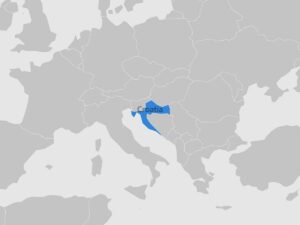
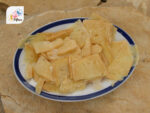
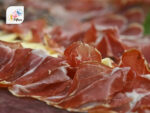
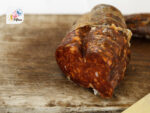
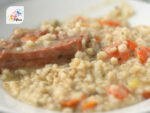
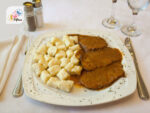

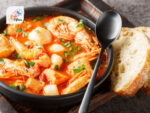

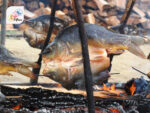
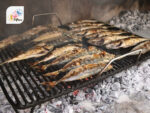



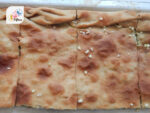
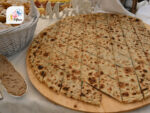
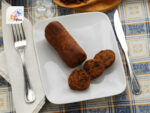
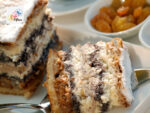
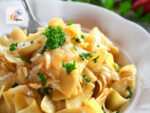
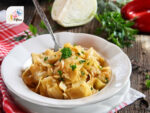
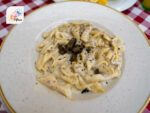
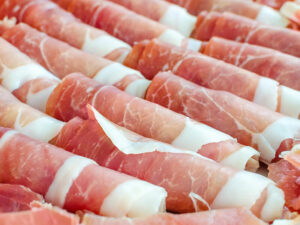
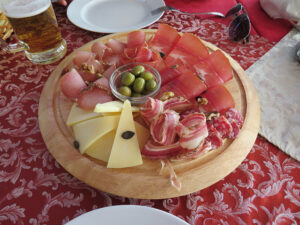
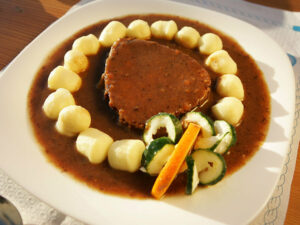
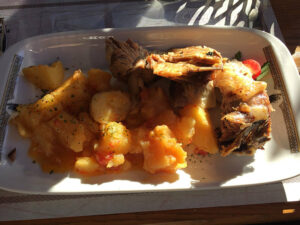
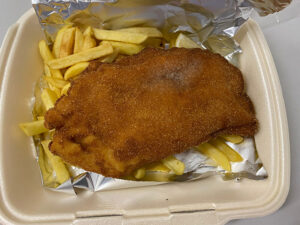
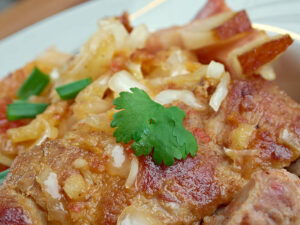
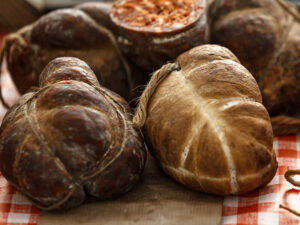
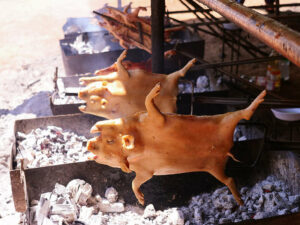
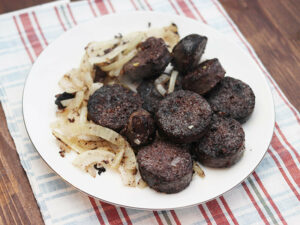
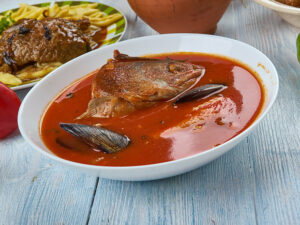
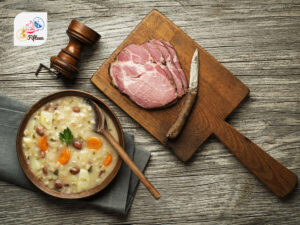
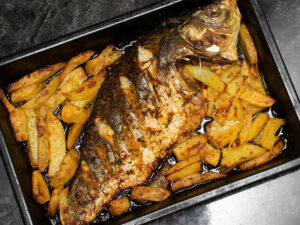
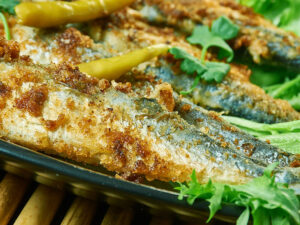
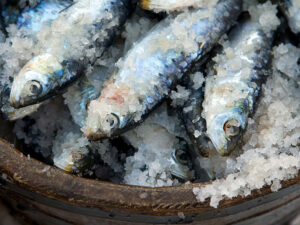
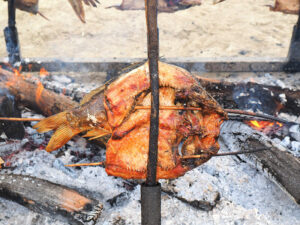
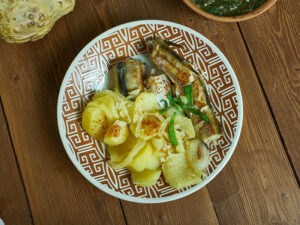
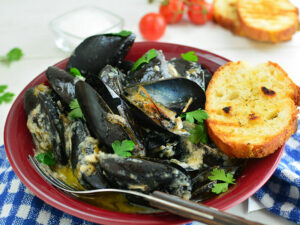
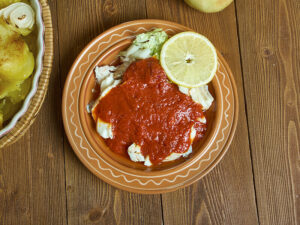
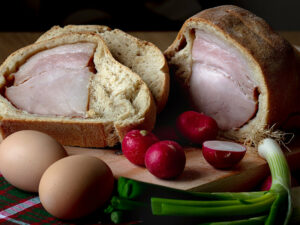

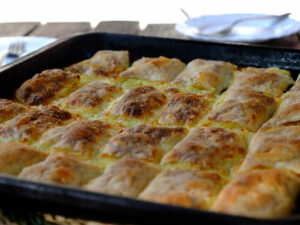
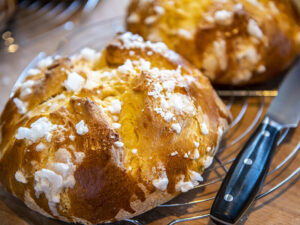
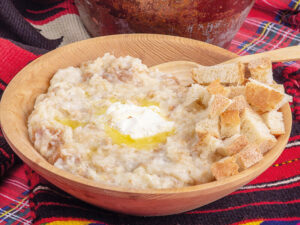
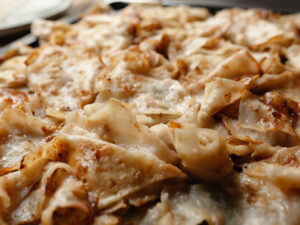
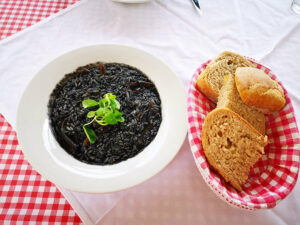
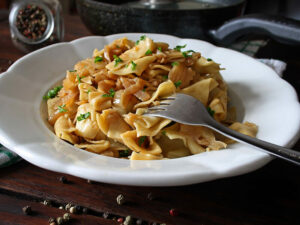
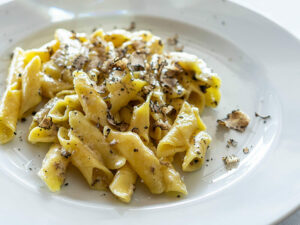

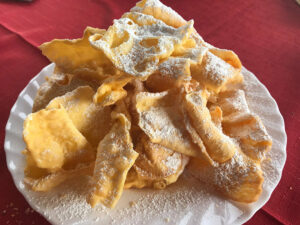

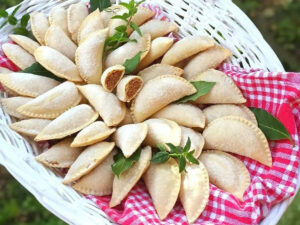
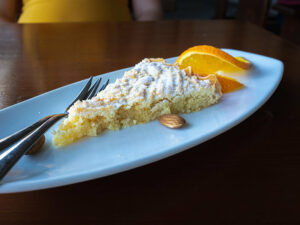
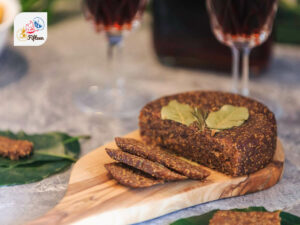
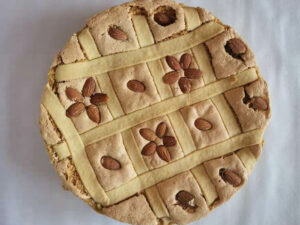
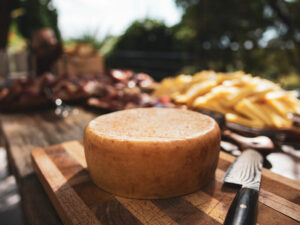
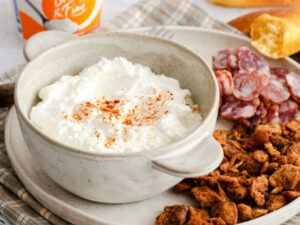
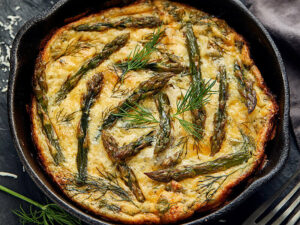

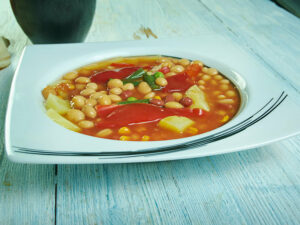
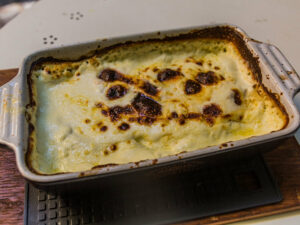
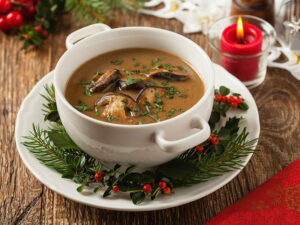
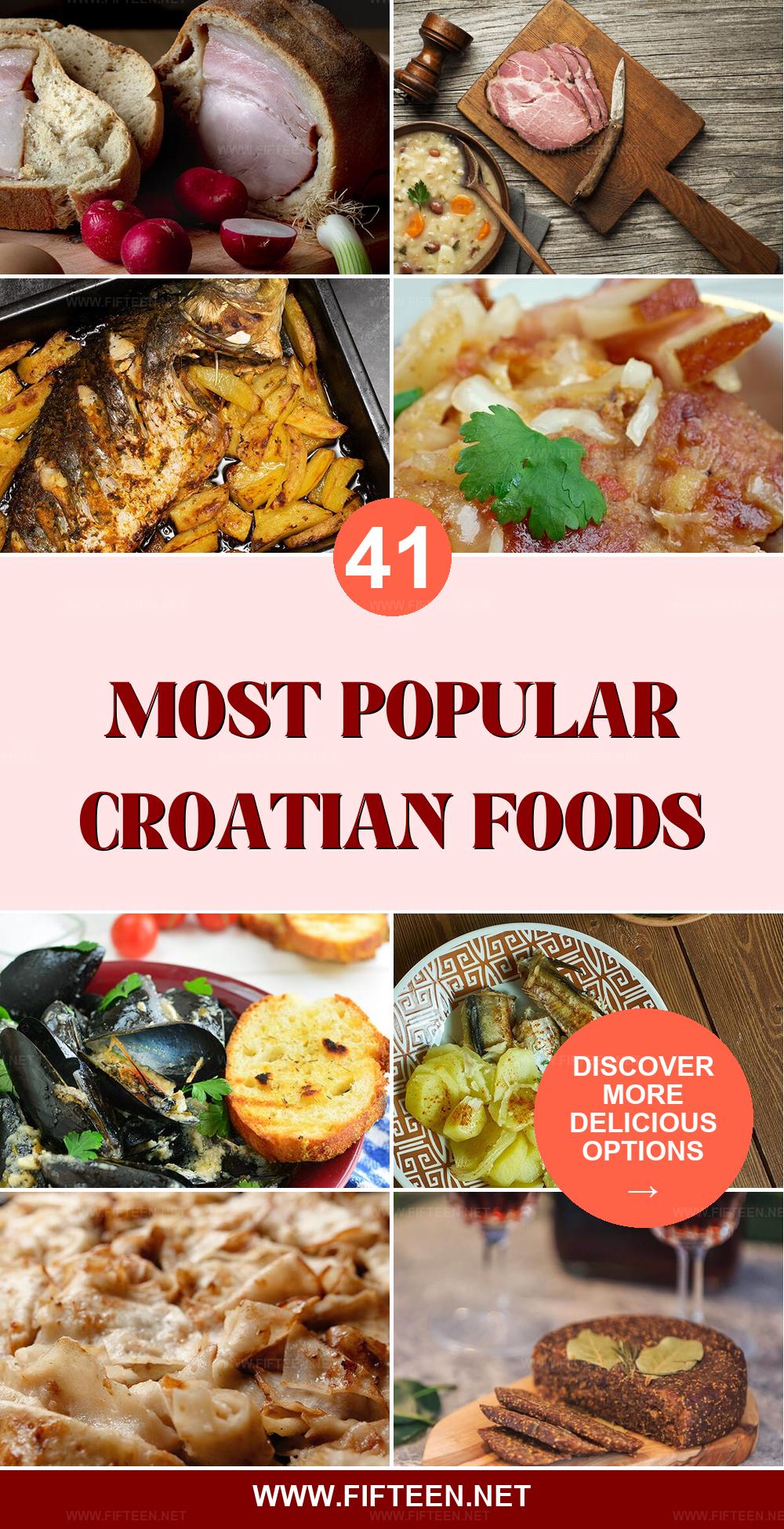
Jamie Scott
Editor in Chief, Senior Content Writer
Expertise
Home Cooking, Meal Planning, Recipe Development, Baking and Pastry, Food Editor, Cooking-video Maker, Western Food Evaluation Expert
Education
Le Cordon Bleu College of Culinary Arts
Local Community College, New York, NY
Jamie Scott is a skilled culinary expert and content creator specializing in Western cuisine. With over 15 years in the culinary field and formal training from Le Cordon Bleu, Paris, Jamie deeply understands how to blend nutrition with delicious flavors. His passion for cooking matches his commitment to making healthy eating accessible and enjoyable.
On Fifteen.net, Jamie brings a fresh perspective to classic dishes and beverages, offering readers insightful recipes, cooking tips, and a fresh view on meal planning that emphasizes taste, health, and simplicity.